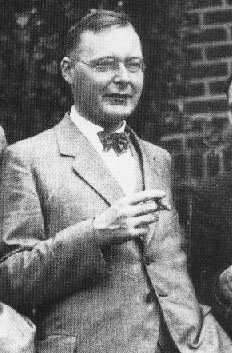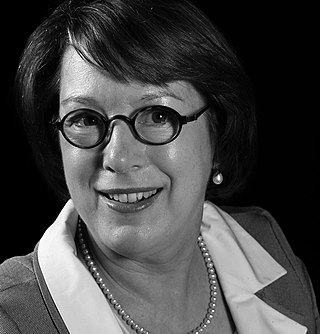Related Research Articles
Dhrupad is a genre in Hindustani classical music from the Indian subcontinent. It is the oldest known style of major vocal styles associated with Hindustani classical music, Haveli Sangeet of Pushtimarg Sampradaya and also related to the South Indian Carnatic tradition. It is a term of Sanskrit origin, derived from dhruva and pada. The roots of Dhrupad are ancient. It is discussed in the Hindu Sanskrit text Natyashastra, and other ancient and medieval Sanskrit texts, such as chapter 33 of Book 10 in the Bhagavata Purana, where the theories of music and devotional songs for Krishna are summarized.

A raga or raag is a melodic framework for improvisation in Indian classical music akin to a melodic mode. The rāga is a unique and central feature of the classical Indian music tradition, and as a result has no direct translation to concepts in classical European music. Each rāga is an array of melodic structures with musical motifs, considered in the Indian tradition to have the ability to "colour the mind" and affect the emotions of the audience.

The Nāṭya Śāstra is a Sanskrit treatise on the performing arts. The text is attributed to sage Bharata Muni, and its first complete compilation is dated to between 200 BCE and 200 CE, but estimates vary between 500 BCE and 500 CE.

Indian classical dance or Shastriya Nritya is an umbrella term for various performance arts rooted in Hindu musical theatre styles, whose theory and practice can be traced to the Sanskrit text Natya Shastra. The number of classical dances range from eight to more, depending on the source and scholar. The Sangeet Natak Academy recognizes eight – Bharatanatyam, Kathak, Kuchipudi, Odissi, Kathakali, Sattriya, Manipuri and Mohiniyattam. Scholars such as Drid Williams add Chhau, Yakshagana and Bhagavata Mela to the list. Additionally, the Indian Ministry of Culture includes Chhau in its classical list. These dances are traditionally regional. They consist of compositions in Hindi, Malayalam, Meitei (Manipuri), Sanskrit, Tamil, Odia, Telugu, or any other Indian language and they represent a unity of core ideas in a diversity of styles, costumes and expression. Currently, there are 9 official classical dances in India.

Hendrik Anthony "Hans" Kramers was a Dutch physicist who worked with Niels Bohr to understand how electromagnetic waves interact with matter and made important contributions to quantum mechanics and statistical physics.

The Sangita-Ratnakara, संगीतरत्नाकर,, literally "Ocean of Music and Dance", is one of the most important musicological texts from India. Composed by Śārṅgadeva (शार्ङ्गदेव) in Sanskrit during the 13th century, both Carnatic music and Hindustani music traditions of Indian classical music regard it as a definitive text. The author was a part of the court of King Simhana of the Yādava dynasty whose capital was Devagiri, Maharashtra.
Śārṅgadeva (1175–1247), also spelled Sharngadeva or Sarnga Deva, was the 13th-century Indian musicologist who authored Sangita Ratnakara – the classical Sanskrit text on music and drama. It is considered to be the authoritative treatise in Indian classical music by both the Hindustani music and the Carnatic music traditions.
Nijenhuis is a Dutch toponymic surname. It is a form of Nieuwenhuis found most commonly in the provinces of Gelderland and Overijssel.
Johannes Adrianus Bernardus van Buitenen was a Dutch Indologist at the University of Chicago where he was the George V. Bobrinskoy Professor of Sanskrit in the Department of South Asian Languages and Civilizations. He was one of the world's leading Sanskrit scholars. His interests ranged widely over literature, philosophy and philology, but toward the end of his career he focused primarily on the Mahābhārata.
Jan Gonda was a Dutch Indologist and the first Utrecht professor of Sanskrit. He was born in Gouda, in the Netherlands, and died in Utrecht. He studied with Willem Caland at Rijksuniversiteit, Utrecht and from 1932 held positions at Utrecht and Leiden. He held the positions of Chair of Sanskrit succeeding Caland from 1929, as well as of Indology from 1932. He published scholarly articles on Indian Sanskrit and Indonesian Javanese texts for sixty years. In 1952, he published his monumental work on Sanskrit in Indonesia. His contributions to philology and Vedic literature has been oft-cited.
Marinus Anton Donk was a Dutch mycologist. He specialized in the taxonomy and nomenclature of mushrooms. Rolf Singer wrote in his obituary that he was "one of the most outstanding figures of contemporary mycology."
Murki is a short taan or inverted mordent in Hindustani classical music, known as pratyahatam in Carnatic music. It is a fast and delicate ornamentation or alankar, employing two or more notes and is similar to a mordent or ulta murki. A murki is less forceful than a khatka or a zamzama. A combination like R R S S could be a murki or a khatka or the starting point of a zamzama, depending on the force of delivery. Murkis may or may not be appropriate for a given raga. It is also employed in thumris and other lighter genres.
Cornelis Gijsbert Gerrit Jan van Steenis was a Dutch botanist. Van Steenis wrote many publications on the flora of the Maritime Southeast Asia region, among others about taxonomy and plant geography. Besides his expeditions in the Malay region, he also traveled in Australia and New Zealand.

Tjitske Nienke"Cisca"Wijmenga is a Dutch professor of Human Genetics at the University of Groningen and the University Medical Center Groningen. She has been Rector Magnificus of the University since September 2019.
Keimpe Arnoldus Algra is a Dutch professor of Ancient and Medieval philosophy at Utrecht University.
Hendrik Wilhelm "Henk" Bodewitz was a Dutch Sanskrit scholar. He was a professor at the Universities of Utrecht and later Leiden between 1976 and 2002.

Josine Henriëtte Blok is a Dutch classical scholar. She has been a professor of Ancient History and Classical Civilisation at Utrecht University since 2001 up until 2019.
Roelof "Roel" van den Broek is a Dutch religious scholar. He was a professor of Religious History of the Hellenistic period at Utrecht University between 1979 and 1991. He subsequently was a professor of history of Christianity until his retirement in 1997.

Vadya, also called vadyaka or atodya, is one of the three components of sangita, and refers to "instrumental music" in the Indian traditions. The other two components of sangita are gita and nritya. In the general sense, vadya means an instrument and the characteristic music they produce, sound, or play out.
Ferdinand Jacobus van Ingen was a Dutch scholar of Germanistics. He was a professor of German literature at the Vrije Universiteit Amsterdam between 1972 and 1998.
References
- 1 2 "Emmie te Nijenhuis". Dutch Studies on South Asia, Tibet and classical Southeast Asia. Archived from the original on 20 September 2019.
- ↑ Elizabeth Sleeman (2001). The International Who's Who of Women 2002. Psychology Press. pp. 407–. ISBN 978-1-85743-122-3.
- ↑ Bob Van Der Linden (27 July 2018). Arnold Bake: A Life with South Asian Music. Taylor & Francis. pp. 259–. ISBN 978-1-351-35690-9.
- ↑ "Emmie te Nijenhuis". Royal Netherlands Academy of Arts and Sciences. Archived from the original on 22 October 2017.